Recipes

scone
Prepare the dry ingredients: In a large bowl, sift together the flour, baking powder, and salt. This helps to aerate the flour and avoid lumps. Cream the butter and sugar: Using a mixer fitted with the paddle attachment, cream the butter and sugar until light and fluffy. Add the wet ingredients: Add the egg and buttermilk to the butter-sugar mixture. Mix until well combined. Combine wet and dry ingredients: Gradually add the dry ingredients to the wet mixture. Mix until just combined to avoid overworking the dough. Rest the dough: Let the dough rest for 5 minutes. Roll out the dough: Roll out the dough to a thickness of about 13 mm (1/2 inch). Cut out the scones: Use a 6 cm (2.5-inch) round cutter to cut out scones from the dough. Place them upside down on a baking sheet lined with silicone baking mats or parchment paper. Glaze the scones:

Tuscan Schiacciata Bread
Make the pre-fermented dough. Mix together water, flour and yeast. Let sit for 6-12 hours, preferably overnight. Make the schiacciata dough. In a large bowl, combine the pre-fermented dough along with 500 grams flour, 250 grams water and 6 grams salt. Mix until a shaggy dough forms, then knead with your hands until the dough is smooth and elastic but still slightly sticky, 5-10 minutes. If the dough seems very sticky and isn't coming together, add a little more flour. Add a good drizzle of olive oil to the bowl and turn the ball of dough to coat well. Then cover with a damp kitchen towel and allow to rise for two hours, folding the dough over on itself a few times every 30 minutes for this first rise. Drizzle a sheet pan with a generous amount of olive oil. Then stretch the risen dough out onto the sheet pan, doing your best to make it reach all the corners and sides. If you're having trouble stretching the dough (it's very elastic), let it rest for about 5 minutes between stretches. Cover the stretched dough with plastic wrap or a damp kitchen towel and allow to rise again, 2 hours. While the dough is rising, preheat oven to 450. Once risen, use your fingertips to dimple the dough. Then coat it in another generous amount of olive oil and sprinkle with flaky sea salt. Bake the dough for 20-25 minutes, until it is golden brown and the bottom is nice and crusty. Allow it to cool in the pan for 10 minutes before slicing into squares and then slicing across to make sandwiches.
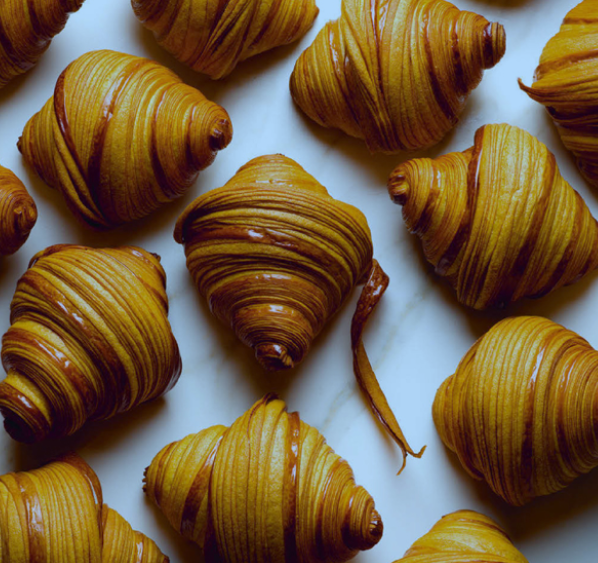
croissant Cedric Grolet
in stand mixer fitted with a dough hook, add the flour, salt, sugar, yeast, eggs, and milk, and mix on the first speed setting for 35 minutes. Add the butter and mix on the second speed setting for 8 minutes. Cover the dough with a wet cloth and let rise for 1 hour at room temperature. IPunch down the dough by hand, then roll it out to the width of the dry butter and double its length. Freeze for 5 minutes, then refrigerate for 15 minutes. Place the dry butter in the middle of the dough and fold over the edge of the dough on each side. Place butter side up. Using a rolling pin, make a double turn: Roll from top to bottom to a thickness of about 1⁄4 inch (7 mm). Make a slight mark in the middle of the dough, fold the top and bottom to this midpoint, and fold the dough in half again like a wallet. Refrigerate for 10 minutes. Finally, do a simple turn: Roll out the dough to a thickness of 3⁄8 inch (1 cm), fold the top third of the dough down, and then fold the bottom third over the top. Roll out to a thickness of 1⁄8 inch (3.5 mm).
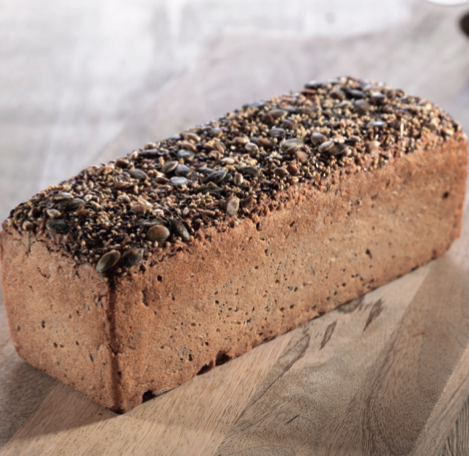
Norvegian Bread
15 minutes at low speed with all ingredients Add the Bassinage water at low speed during 2-3 minutes Temperature of the dough at the end of kneading 25°C 1 or 1 .5 kg of dough and put in moulds REST 1 hour Coat with seeds Put in the oven at 235°C and bake at decreasing temperature for approx . 1 hour
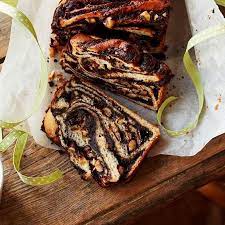
Babka Filling
1. Mix the ingredients of the Babka Mix except the chocolate drops/hazelnuts
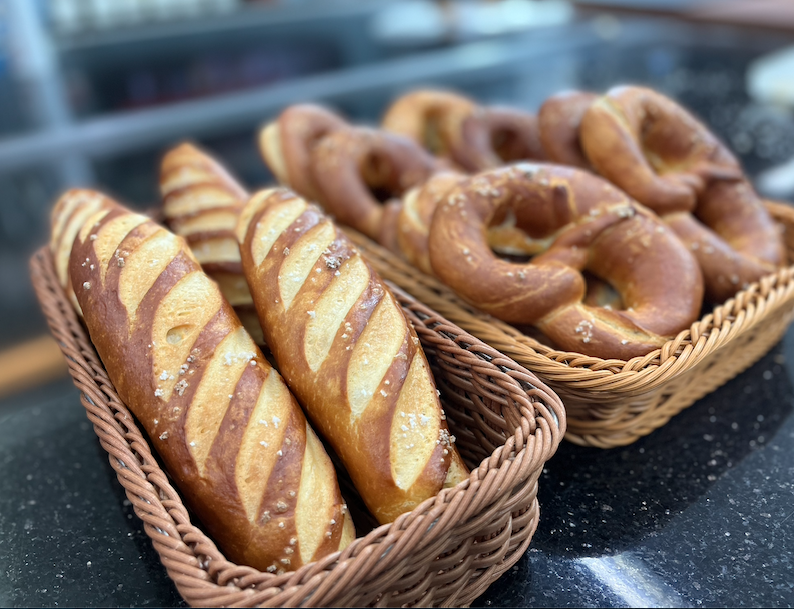
German pretzels
temperature base 24ºC 1. place all the cold ingredient in mixer 2. mix 3-4 mn 1st speed 3. mix 8mn 2nd speed 4. check temperature, need to be 24ºC 5. rest the dough in container for 20-30mn 6. cut 150gr paton 7. shape the dough to a pretzel 8. proof 10mn 9. deep the pretzel in coustic acid 10. cut the pretzel on top 11. proof 10 more mn and bake at 200ºC for 12mn 12. cool down on rack
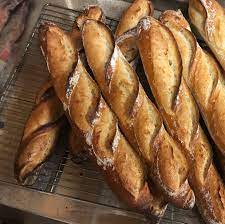
Tradition French baguette
autolyze 1. mix the flour and water in your mixer until flour absorbed all the water, aproximative 2-3mn 2. stop and cover your dough for 1 hour 3. start mixing dough and add liquid starter for 4mn low speed 4. add salt and yeast and mix in second speed for 4-6mn 5. temperature 24ºC 6. rest the dough in a container for 1 hour 7. do some fold to give force and got better development 8. rest for one more hour 9. divide you dough to 350gr paton 10. rest 20mn on wooden table and cover 11. shape ypur baguette 50-60cm and place on bakery linen 12. you can proof you baguette at 19ºC for 3 hour or place in retarder proofer for 16 hour 13. score your baguette and bake at 250ºC for 20mn 14. remove from oven and place on rack to cool down
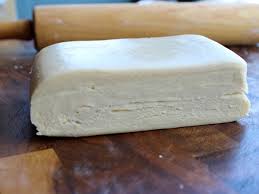
Blitz Puff Pastry
Sift the two flours together into a mixing bowl. Cut the butter into the flour as for pie dough, but leave the fat in very large lumps, 2.5 cm across. Dissolve the salt in the water. Add the salted water to the flour/butter mixture. Mix until the water is absorbed. Let the dough rest 15 minutes. Refrigerate it if the bakeshop is warm. Dust the bench with flour and roll out the dough into a rectangle. Give the dough 3 four-folds.
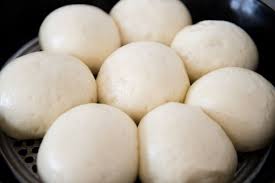
Steam Bun
1. mix 3mn low speed, 4mn hight speed 2. rest 1h, divide 20g, shape it 3. rest 30mn 4. steam it for 6-8 mn 5. cool it down
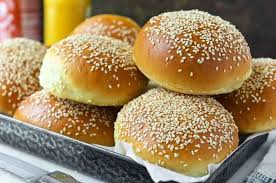
Burger bread
1. Mix all ingredients in dough mixer for 10 mins 2. Rest 15mn then keep in the fridge 1h30mn 3. Scale rest 15mn, and shape it burger buns 30g small, 45g kids, 85 adults, 55 hot dog 4. Proof 40mn double size 5. Egg wash and sesame on top, cook 240 degree 8mn
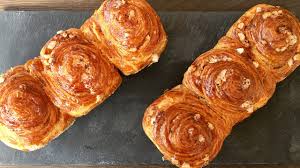
brioche dough feuilletée
Knead with the beater for the hook for 2 minutes in first gear, Add the first part of the cold butter cut into small cubes and continue to knead until the takeoff of the dough. temperature of the dough 24°C. Score 30 minutes at laboratory temperature. tighten the dough and spend 45 minutes in the freezer and finally in the refrigerator at 4°C all night. the next day, spread the dough to the rolling mill to give the size of 60 cm by 40 cm and place it on a cold plate for 10 minutes in the freezer. spread the butter in the rolling mill to half the size of the dough, place it on the tempera and close. Give a simple trick and place in the cold. repeat two more times to have a total of 3 rounds, lower to the plate size and re-cold.
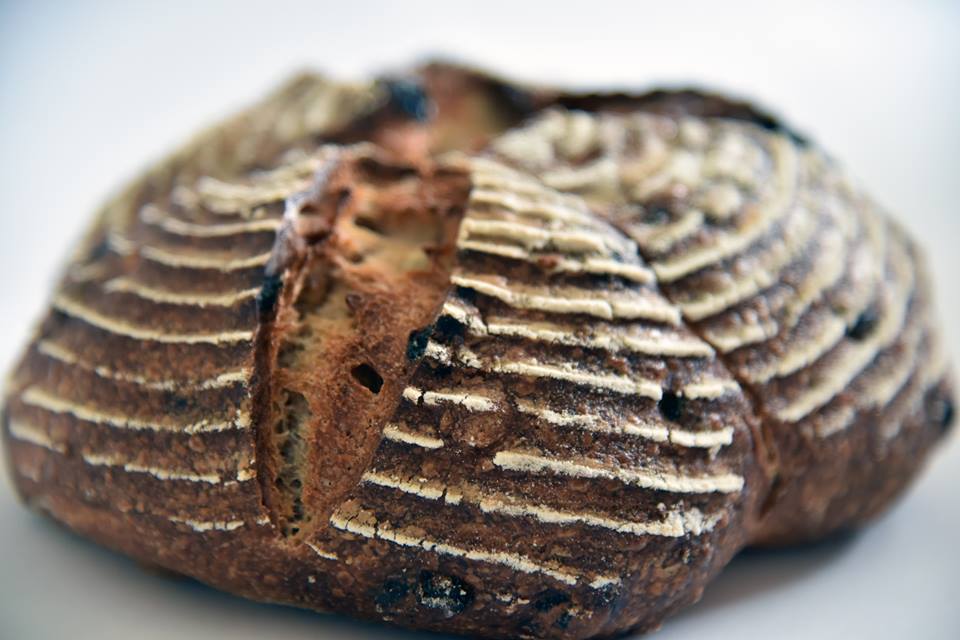
3 grains
METHOD Day before baking: Bring 900 gm water to boil Add grains Let it boil for approx. 3 min Keep grains in a bowl Store overnight in chiller Day of baking: Mix all ingredients to soft dough Rest dough for approx. 45 min Divide dough as desired Mold oval shape Cover lightly with mixed decoration seed Proof for approx. 45 min Cut gently before baking Bake at 230 C with little steam
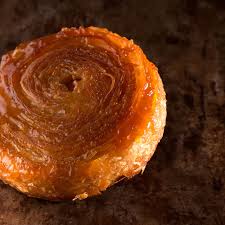
koingn amann
Incorporation: all the ingredients at the beginning Frasage: 5 minutes in 1st gear consistency: soft Kneading In 2nd gear to obtain the separation of the dough. Pastry temperature 23/24 ° C Clocking 30 minutes room temperature 20/22 ° C Spread the dough, lay the square of butter, turn into wallet cool fridge pendant 20 minutes. Give a double turn. Store in a cool place for 1 hour under plastic film, then repeat the operation adding the sugar Spread the dough to 4 mm and detail squares of 10x10. Fold the four pieces towards the center once, then repeat the operation. Squeeze with the palm of your hand and mold into the tepal molds. You can also roll the dough like a roll then cut into sections. Proffing 1h30 to 26/28°C Cooking at 180°C then at 160°C for 30 to 40 minutes for individuals and longer for large pieces. NOTE: For large pieces, emptied during cooking, syrup is in excess. The fold must be caramelized and well browned. Conservation 3 days.
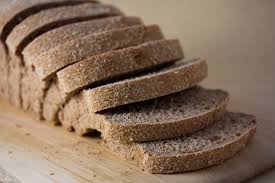
Whole Wheat Toast Bread
mixing: Add all the ingredients to the mixing bowl. In a spiral mixer, mix on first speed for 3 minutes in order to incorporate the ingredients thoroughly. The dough consistency should be medium. Turn the mixer to second speed and mix for about 3 minutes more, until a fairly strong gluten development has been achieved. Desired dough temperature: 24℃ Bulk fermentation: 2 hours. folding: Fold the dough once, after 1 hour. divinding fermentation: Divide the dough into appropriate-sized pieces, depending on the pan size in which they will bake. Preshape lightly into rounds or blunt cylinders and place on a lightly floured work sur- face, seams up. Cover the rounds with plastic. When the dough has relaxed sufficiently (10 to 20 minutes), shape it into tight cylinders. Place the dough in the loaf pans and cover with baker’s linen and plastic. final fermentation: 1 to 1 1⁄2 hours at 24℃ Baking: With normal steam, 200℃. Large pullmans will bake in 40 to 45 minutes. Smaller loaves will take be- tween 30 and 36 minutes, depending on dough weight. Thump the bottom of the loaves when you think they are done, and listen for a pronounced hollow sound.
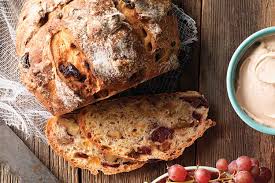
Whole Wheat Bread Hazelnut & Currant
Add all the ingredients except the pâte fermentée, hazelnuts, and currants to the mixing bowl. In a spiral mixer, mix on first speed for 3 min- utes in order to incorporate the ingredients. As the dough is coming together, add the pâte fermentée in chunks. If necessary, correct the hydration by add- ing water or flour in small amounts. The dough will firm up a bit once the nuts and currants are added, so be sure it is slightly loose at the early stages of mixing. Turn the mixer to second speed and mix for 3 minutes. The dough should be supple and some- what loose, and the gluten should be moderately developed. Now add the hazelnuts and currants all at once, and mix on first speed just until they are evenly incorporated. In a spiral mixer, the reverse function of the bowl can be used to encourage speedy incorporation. Desired dough temperature: 24℃ Bulk fermentation: 2 hours. folding: Fold the dough after 1 hour of bulk fer-mentation. dividing and shaping: Divide the dough into 1.5-pound pieces. Preshape lightly into rounds and place on a lightly floured work surface, seams up. Cover the rounds with plastic. When the dough has relaxed sufficiently (10 to 15 minutes), shape into round or oval loaves, place them either into floured bannetons or between folds of lightly floured baker’s linen, and cover with plastic. Very nice rolls can also be made with the dough. If you are making just a few loaves, take a few moments and pick out the currants on the surface. This prevents them from overbaking and becoming bitter. This is not practical for large production. final fermentation: Approximately 1 to 11⁄2 hours at 24℃ Baking: Transfer the risen loaves onto the loading conveyor or peel. A simple scoring pattern is best, as the blade will be running into hazelnuts and currants as you slash the surface. Presteam the oven, load the bread, and steam again. Bake at 250°C. Lower the oven temperature by 220℃ after about 20 minutes to prevent the extra sugars in the dough from color- ing the bread too quickly. Open the oven vents after the loaves show color, in order to finish the bake in a drying oven. Loaves scaled at 900gr will bake in approximately 40 minutes.
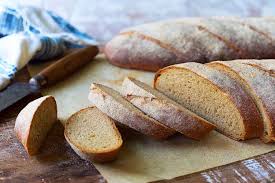
Whole Wheat Bread
mixing: Place all the ingredients except the pâte fermentée in the mixing bowl. In a spiral mixer, mix on first speed for 3 minutes in order to incorporate the ingredients. As the dough is coming together, add the pâte fermentée in chunks. If necessary, correct the hydration by adding water or flour in small amounts (the absorption of whole-wheat flour varies considerably; don’t hesitate to add a fair bit of water if the dough seems dry). Finish mixing on second speed for 3 minutes. The dough should be supple and slightly loose, and the gluten should be moder- ately developed. Desired dough temperature: 24℃ Bulk fermentation: 2 hours. folding: Fold the dough after 1 hour of bulk fer- mentation. dividing and shaping: Divide the dough into 450-900gr pieces. Preshape lightly into rounds and place on a lightly floured work surface, seams up. Cover the rounds with plastic. When the dough has relaxed sufficiently (10 to 15 minutes), shape into round or oval loaves, place them either into floured bannetons or between folds of floured baker’s linen, and cover with plastic. The bread can also be baked in loaf pans or shaped into rolls. final fermentation: 1 to 11⁄2 hours at 24℃ Baking: Transfer the risen loaves onto the loading conveyor or peel. Slash the desired scoring pattern with a blade. Pre-steam the oven, load the bread, and steam again. Bake at 200ºC Open the oven vents after the loaves show color, in order to finish the bake in a drying oven. Loaves scaled at 750gr will bake in approximately 40 minutes. The honey contributes color to the bread, so if the loaves are darkening too quickly, lower the oven temperature by 220℃
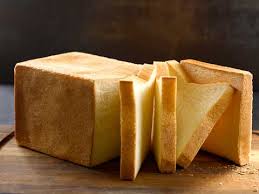
White Toast Bread
mixing: Add all the ingredients to the mixing bowl. In a spiral mixer, mix on first speed for 3 minutes in order to incorporate the ingredients thoroughly. The dough consistency should be medium. Turn the mixer to second speed and mix for about 3 minutes more, until a fairly strong gluten development has been achieved. Desired dough temperature: 24℃ Bulk fermentation: 2 hours. folding: Fold the dough once, after 1 hour. divinding fermentation: Divide the dough into appropriate-sized pieces, depending on the pan size in which they will bake. Preshape lightly into rounds or blunt cylinders and place on a lightly floured work sur- face, seams up. Cover the rounds with plastic. When the dough has relaxed sufficiently (10 to 20 minutes), shape it into tight cylinders. Place the dough in the loaf pans and cover with baker’s linen and plastic. final fermentation: 1 to 1 1⁄2 hours at 24℃ Baking: With normal steam, 200℃. Large pullmans will bake in 40 to 45 minutes. Smaller loaves will take be- tween 30 and 36 minutes, depending on dough weight. Thump the bottom of the loaves when you think they are done, and listen for a pronounced hollow sound.
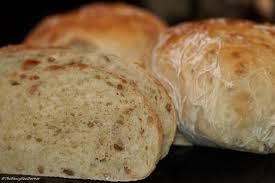
Whey Bread
mixing: Place all the ingredients in the mixing bowl. Mix for 8 minutes on first speed. The dough will be fairly loose textured with modest gluten de- velopment. Desired dough temperature: 24℃ bulk fermentation3 hours. folding: Fold the dough twice, after 1 hour and 2 hours of fermentation. Bring as much strength as possible into the dough by folding with confidence and care; this will overcome the intentional lack of significant gluten development that occurred during mixing. dividing anshaping: Divide the dough into 450-900gr pieces (or larger). Preshape, and when sufficiently relaxed, shape into strong round loaves. Place in floured bannetons. final fermentation About 1 hour at 24℃ Baking: With normal steam, 250℃ Bake this bread until it achieves a full rich crust color. You may need to lower the oven temperature by 220℃ for the last part of the bake. Loaves scaled at 900gr should bake for 36 to 38 minutes. A full bake is recommended.
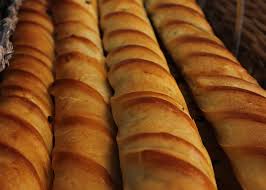
Viennois Dough
in a dough mixer and hook, mix all ingredients for 10 minutes until the dough is detached from the bowl. place in the fridge 24 hours After fermentation process, cut piece of dough to 300-350gr and shape a baguette. Cut straight away with rasor blade and egg wask Place in proofer Bake at 165ºC for 20mn
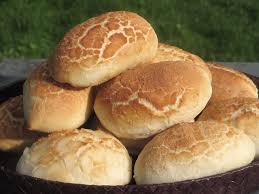
Vienna Bread
soften the yeast in a little water. Fresh yeast: mix with about 2 times its weight in water, or more. Ideal water temperature: 38°C Active dry yeast: Mix with approximately 4 times its weight in water. Ideal water temperature: 40°C Mix the remaining ingredients, including the rest of the water, in the mixture bowl. Add the dissolved yeast, taking care not to let it come in contact with the salt. Mix with a smooth and developed dough.
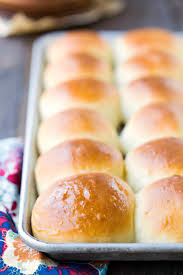
Sweet Rolls
Soften the yeast in part of the liquid, using a separate container. Combine the fat, sugar, salt, milk solids, and flavorings and mix until well combined, but do not whip until light. Add the eggs gradually, as fast as they are absorbed. Add the liquid and mix briefly. Add the flour and yeast. Mix to a smooth dough.
